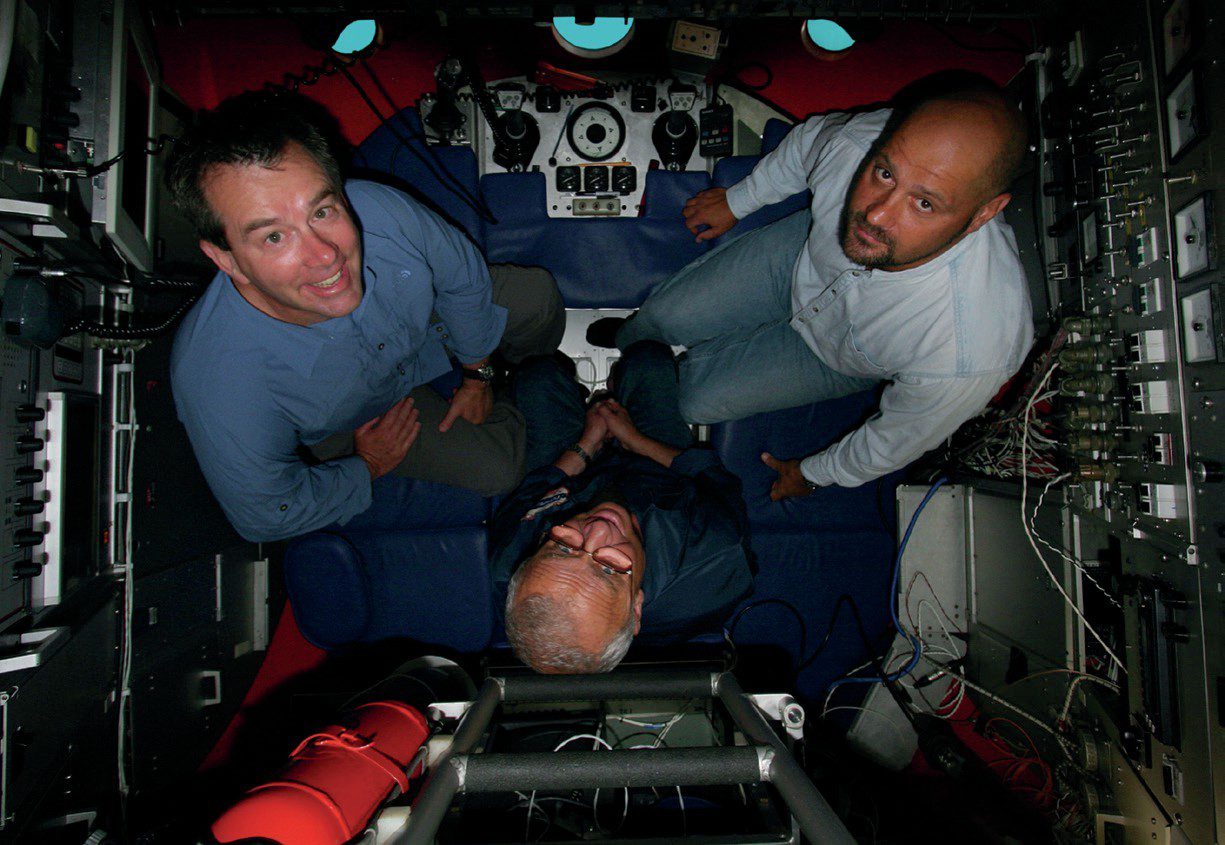We chat to the world-renowned wreck explorer, technical diver and TV presenter about his epic roll call of shipwreck dives, his identification of the German submarine U-869, and visiting the final resting place of the Titanic.
Photographs by Richie Kohler
As we normally kick off proceedings, how did you first get into scuba diving?
A: In 1969, the Apollo space programme was in full swing and like nearly every other kid on the planet, I wanted to be an astronaut. At this same moment in time, my father was taking scuba diving lessons and brought me to watch as he did his pool classes. I sat at the edge of the pool with my feet in the water and was amazed as he put the doublehosed regulator into his mouth, descended to the bottom of the pool and sent clouds of bubbles rising to the surface.
Once certified, he’d allow me to assemble and disassemble his rig, all the while explaining how the regulator reduced the tank pressure and made it possible to breathe against the weight of the water.
Eventually I got to try it out, first in the pool and then in the shallow water behind our boat while docked at the quayside. My Dad was always the type of man to encourage his children to try all sorts of things, like using power tools, shooting guns or motor sports, so this endeavour was not out of the ordinary. What was surprising is how deep the feeling of being a weightless explorer bit into my soul, and indirectly shaping the course of my life.
I recall that first dive began with my father’s sage words of advice to ‘breathe normally, do not hold my breathe and ascend slowly’ (btw, good advice to this day!). As I descended into the murky waters of a Brooklyn New York marina, even with the straps cinched down tightly, the heavy tank lifted off my back in the water and I was weightless! It was not a reach for a starstruck kid from Brooklyn to see
the parallels between astronaut and aquanaut. I may never get to travel among the stars, but even at seven years old, I could see that it was within my reach to explore the ocean.
What first attracted you to wreck diving, in particular deep wreck diving expeditions?
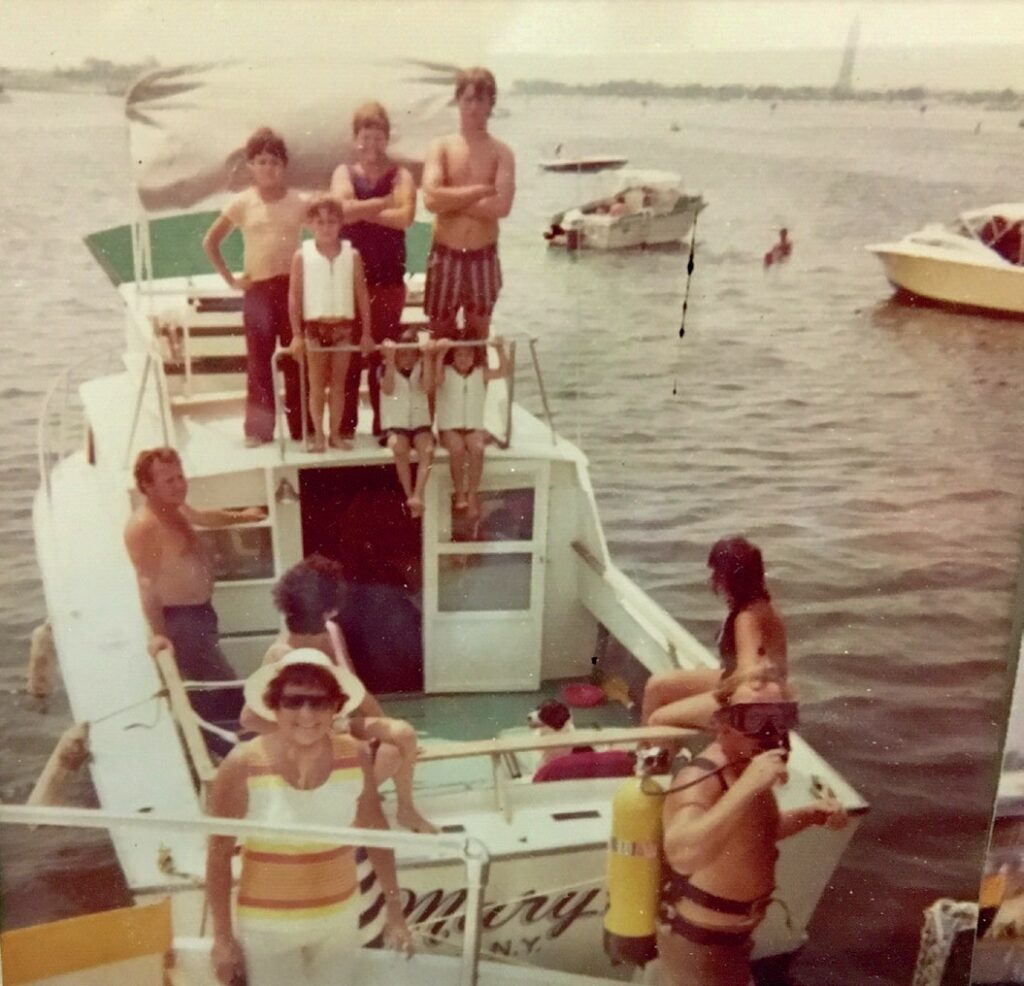
A: My family had a small boat that we would use every weekend for family outings and fishing trips. My father and his brother (Uncle John) would often take me offshore with them fishing and most of the time we would fish around the shipwrecks that littered the approaches to New York harbour, from Long Island to New Jersey. Both my father and Uncle John would tell me the names of these ships and the stories (as best they knew) of how they sank.
As the boat would rock in the warm summer sun, I was held rapt with stories of sailors fighting for their lives against storms, collisions and war. They told of German U-boats that not once, but twice, came to the shore of America and sank ships within site of the beaches. There was history and drama, unseen beneath our boat, begging to be explored.
It wouldn’t be until I was 15 and a certified diver that my father would finally take me to explore a shipwreck firsthand off Block Island. The joke in the family is I must have cut myself on the wreck because shipwreck exploration has been in my blood ever since.
In the years that followed, I would connect with a group of divers who explored shipwrecks in the New York/New Jersey waters every weekend. These guys took a shine to me and taught me things that, at the time, no one was teaching… how to dive deeper than 40m and explore a shipwreck without dying in the process. They became, in effect, my other ‘fathers’, shaping my attitude and the equipment I used to go ‘crazy deep’ on air. As a matter of fact, their (deserved) nickname in our small diving community was ‘the crazies’, or ‘the thugs’ for their penchant for diving outside of known recreational limits and exploring far inside broken ships. As a group we eventually came up with a more-respectable name, The Atlantic Wreck Divers.
The purpose for diving deep was not for record breaking but rather to locate and explore virgin shipwrecks and recover the artefacts that laid lost and forgotten on the seabed. Like my father and Uncle John, these men knew the stories behind the lost ships and much more. They taught me to understand not only a ship’s blueprints or design, but how ships broke apart after years underwater. And more importantly, how to locate and recover artefacts like portholes, crockery or other prized bits of ‘spidge’ or ‘booty’. They set a fire for exploring shipwrecks in my soul that burns to this day.
You dived the infamous Andrea Doria way back in 1985, just a few years after getting your Advanced Open Water Diver card. Tell us about that dive and that wreck, which you have visited more than 120 times since.
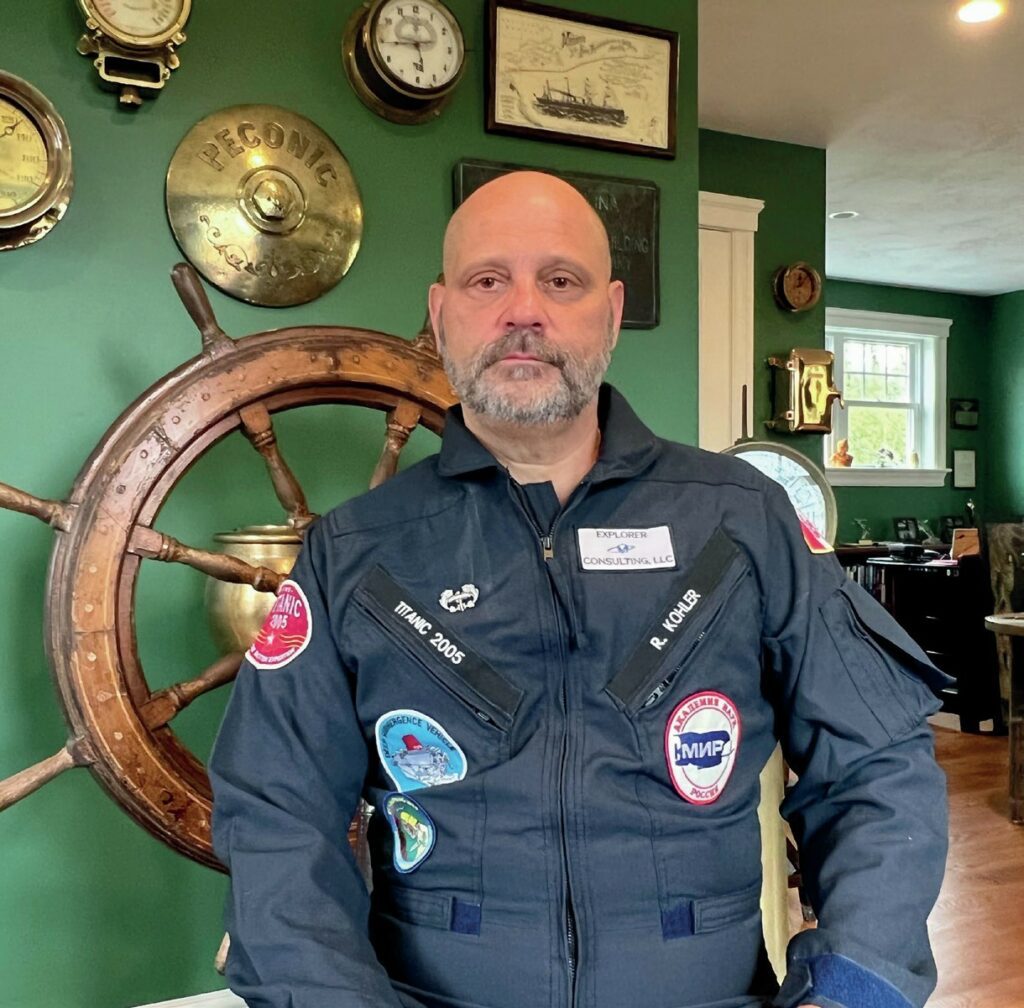
A: In 1985, I was asked to join the very small group of divers who had ventured on an expedition to what was referred to as the ‘Mount Everest of shipwreck dives’. At that time, it was an invitation-only affair, and it meant the world to me to have been asked. It was a given that the captain and my mates thought I had what it takes to go 100 miles from shore and 75m deep to explore an intact passenger liner on air.
Back then there were no agencies who were teaching wreck exploration or deep diving. There were no dive computers, trimix or rebreathers. Diving air that deep was a recipe for incredibly debilitating narcosis, which had to be managed if you were to keep your wits about you in the labyrinth of silt-choked passageways. Air went fast at depth and bottom times was limited to 15 minutes, less you ran out of air on decompression. On top of this, not much was readily understood about ‘deep water black-out’, whether it was caused by oxygen toxicity, carbon dioxide, the work of breathing’ or a combination of any or all of those.
Every bit of this rattled through my head on the 16-hour boat ride out to the wreck site, and I don’t think I was able to sleep that night, both excited and nervous at diving ‘Mount Everest’. To be honest, I don’t think I was able to muster the spit I needed the next morning to de-fog my mask. Once I hit the water and grabbed the anchor line to descend, that was all behind me. Pulling myself down the line, my breathing and exhaust bubbles set the pace to a slow rhythm and when the wreck first materialized out of the green gloom, I was not prepared for the emotion and excitement at simply touching the ship’s side. The Doria was massive, with rows and rows of portholes disappearing in each direction, and I felt small and inconsequent against the port side of the liner.
That first dive I did not enter the ship, but rather got the ‘lay of the land’, so to speak, exploring the area where we tied in, managing my navigation, and more importantly, the hammer of the narcosis. When my bottom time was up, and I began to ascend up the line, my eyes stayed locked onto the hull below me until eventually it was swallowed up in the gloom. I was hooked, and I knew I would be back.
You eventually embraced technical diving, and especially closed-circuit rebreathers – did this go hand-in-hand with your expeditions to deeper and more-remote shipwrecks?
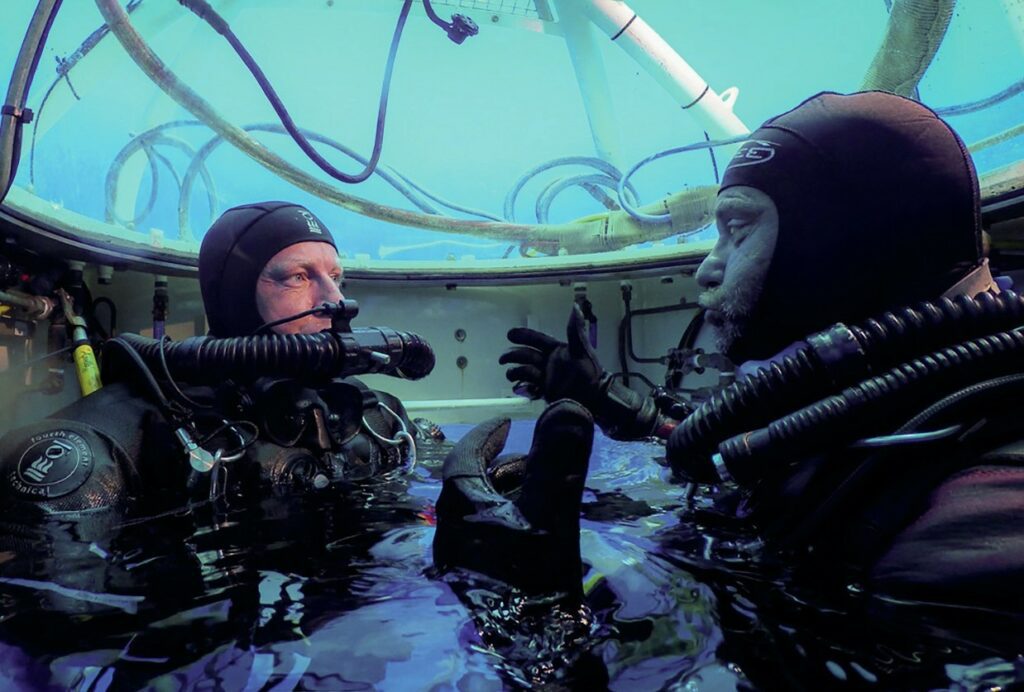
A: When dive computers, then nitrox, and finally trimix made inroads into sport diving, I was never one of the first to try the next ‘new’ thing. I fancy myself a pragmatic type, and am quite comfortable watching others tease out the learning curves. Once settled, I eventually would adapt the latest technology to take me to the next level of diving.
This would be no different when it came to rebreather technology, but it seemed I needed a little shove. That shove occurred on a deep open circuit trimix dive in 90m of water off Nova Scotia when my dive buddies had a gas emergency on ascent. Fortunately, no one was hurt and everything worked out okay, but it was apparent that I had hit the limit I felt comfortable diving on open circuit. When I told my good friend and accomplished wreck diver Leigh Bishop what had happened on that dive, he made it quite clear to me the times, they were a-changing, when he said ‘mate, you have to go to a closed-circuit rebreather or wreck diving will leave you behind’. Truer words had never been spoken.
You are a diver and instructor on many CCR units, including the AP Evolution, the Sentinel and the Megladon. What are the biggest benefits of CCR for the diving you are doing, and how do you decide which unit you are using for what dives?
A: When AP Diving’s Evolution rebreather came out, it was the first CCR that actually knew the PPO2 you were breathing and could calculate decompression requirements based on that information. For me, this was a no-brainer… this was the cutting edge of sport diving technology and I jumped aboard with both feet, eventually becoming an instructor and certifying scores of divers on the Evolution.
Along the way, as time and technology have changed, I have cross-trained on other makes and brands of CCR, and am currently certified on quite a few to keep abreast with an ever-changing field of equipment. People often ask me what CCR I am diving and would I recommend a specific CCR unit to them. My answer is always the same – today’s CCRs are similar to automobiles, in that they will all get you to where you’re going and back again safely, but they all do it with different features, operations and costs. Divers need to figure which unit is the right fit for them.
But for the record, I don’t always dive CCR, as there are situations where open circuit is the right tool for the job, and sometimes its just fun to kick it old school!
Your identification of the German World War Two submarine U-869 with John Chatterton really put you on the map, and this kickstarted your career into the world of TV and underwater documentaries. Back when you were exploring the wreck to try and discover its identity, did you ever think it would lead to the furore it did?
A: You often hear people say ‘this product or event changed my life’, and most of the time, its hyperbole or exaggeration at best. The reality is that the discovery of an unknown virgin German submarine (nicknamed U-Who) off the coast of New Jersey did actually change both mine and John Chatterton’s lives in ways neither of us could have ever imagined.
For each of us there were so many firsts attached to the six years it took to ultimately identify the wreck, like using nitrox for decompression, then mixing our own ‘homebrewed’ trimix in the garage and, of course, those first trimix dives on the submarine itself. It also brought about our first trips to the UK and Germany for research, and opening our eyes to what was being done in the UK and Europe.
Along the way there was great loss with the tragic deaths of three divers while on the wreck. That terrible arithmetic, compounded with the 56 men entombed inside who would remain lost to history if we didn’t solve the mystery, was a driving force to push on. This changed me on a personal level I never saw coming. As for the fact that there would be such attention to our work, a documentary film, a bestselling book and a chance to work on television, well that blindsided us totally. We knew this was an incredible adventure, but we had no idea how far this would take us.
You were co-host – alongside Chatterton – on the History Channel series Deep Sea Detectives. Over the 57 episodes, you got to travel the world to dive awesome shipwrecks, including the German World War One wrecks of Scotland’s Scapa Flow. What were some of your favourite locations?
A: I am often asked ‘what is your favourite dive?’ and I always have the same answer, ‘the next one’. To be honest, I have been so fortunate to work for television as it has not only taken me around the world diving some of the most awesome locations, but it has opened doors, introducing me to incredible people and afforded me fantastic opportunities that still come to this day. I have dived to Titanic twice, made CCR dives alongside sperm whales, and located virgin shipwrecks off Cambodia. I have explored caves in the Dominican Republic and swam into the ice water mansions of shipwrecks deep in the Great Lakes. No matter where I have gone, or what I have seen or done, I am so excited for the ‘next’ dive, wherever that will be.
You mentioned you have dived to the legendary Titanic twice. Tell us what it was like seeing the iconic vessel for the very first time with your own eyes?
A: If diving the Andrea Doria is considered to be like climbing Mount Everest, then exploring the wreck of the RMS Titanic was like going to the moon! The entire event was surreal and the parallel between deep sea submersibles and space exploration was not lost on me. As I climbed the aluminium ladder to get into the MIR submersible, I looked out across the 91-metre ship to all the technology brought to bear for this endeavour, to send three souls two and a half miles down to the bottom of the Atlantic and explore the most-famous shipwreck in modern history.
I am tucked into a small metal sphere crammed with only the very basics for life support and mission objectives, and human comfort is not a big consideration. For the three explorers headed down, there are 100 specialists aboard the ship who made this happen.
Within mere moments we have reached deeper than I had ever been as a diver, and we still have two and a half hours to go for our descent 3,800m. The batteries need to be saved for life support and propulsion during our planned six-hour mission, so there are no lights on during the descent. Just a stygian blackness that seems to reach through the viewport.
After a lifetime of falling through the ocean, we arrive at the seafloor, a monochromatic unending field of mud and sand. A startled rat-tailed fish sparks a moment of curiosity to us all as it sleepily swims across our vision, but that’s not why I am here. It’s the massive object sending a reflection back on our sonar that has brought me to this place. Deftly and with experienced hands, my pilot tracks us in and rises up to bring me face to face with the iconic bow of the Titanic. I am near speechless, muttering only ‘oh my god’, unbelieving that only a few feet from my face is the legendary ship of dreams herself.
We spend hours filming and exploring, excited by each artefact and each new discovery. It all goes by in a heartbeat. It was only near the very end of the dive, when we headed aft, that it seemed the weight and cold of the Atlantic bore down on me. It was here, at the very stern of the ship, the terrible fate of the 1,500 souls aboard was forced back into my conscious. It was so easy to revel in the achievement and my moment of exploration, and for a short time, forgetting the terrible tragedy to which I was witness.
What is your best diving memory?
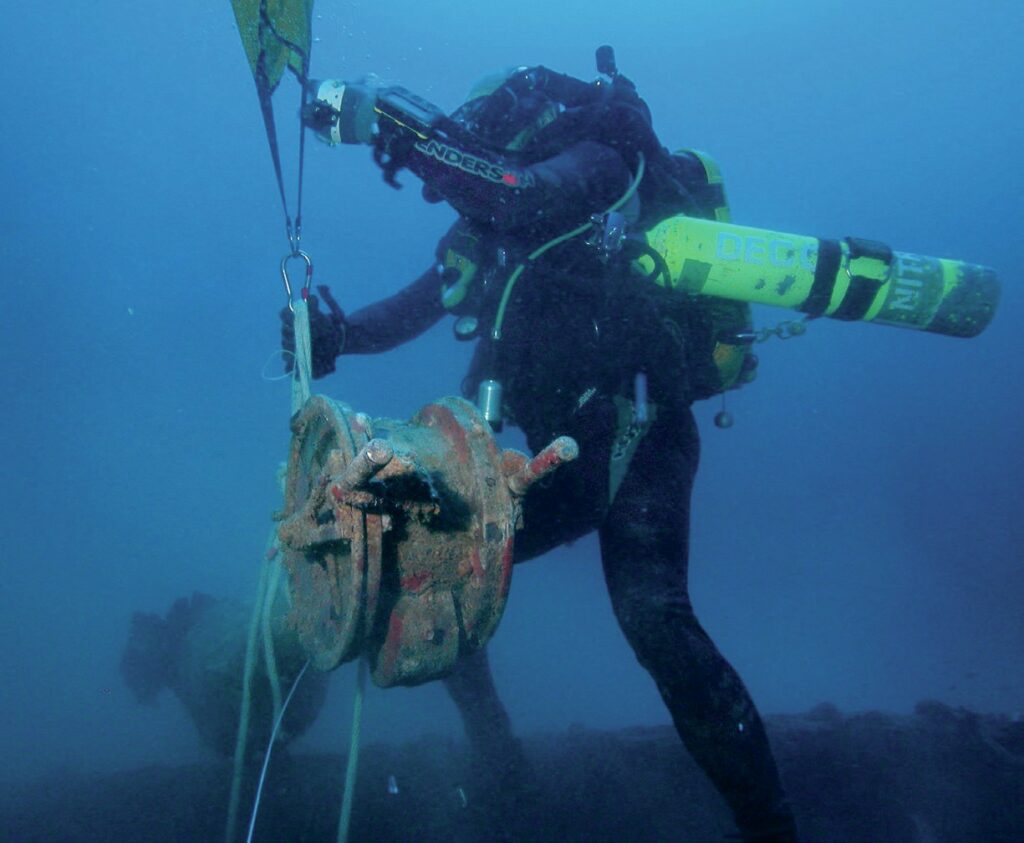
A: That’s a really hard call, there’s some really awesome ‘fish’ moments, incredible ‘shipwreck’ moments, and then some great personal achievement moments. I think a lifetime of diving has provided me with a wealth of great experiences, above and below the water, and its difficult to say one surpasses the other. I recall with great fondness a moment (snorkelling of all things) when a very small baby dolphin came to investigate me and the mother came (very gently) between us, and seemed to look into my eyes as she nudged the baby away, ‘not to close to the strange hooman’. I have been at Blue Corner in Palau and had in my vision at the same time, sharks, dolphins, sea turtles and shoals of fish that at times blocked the sun.
Of all the adventures I have had, I think the one I like the best is when I am descending down on a virgin site, full of promise and wonder at what might be waiting for me to find.
On the flipside, what is your worst diving experience?
A: Well just recently I reminded myself that experience doesn’t make one exempt from making silly mistakes, or worse, assumptions that could lead to tragedy. While diving a wreck in 90m, I noticed I was low on gas, but figured I would have more than enough to finish the dive.
While I was ascending on my deployed SMB, three things happened concurrently that wound up with me pinned to the wreck in high current, out of gas to breathe, and separated from my buddy. I had to let go of my reel in order to bailout to open circuit and free myself from what had me pinned to the wreck. I was fortunate that I was able to extricate myself from that situation and that my dive buddy came back for me… it cost me a scooter and a little pride – asmall price to pay for my hubris. Point is, we must learn from our errors and missteps.
What does the future hold for Richie Kohler?
A: I am soon off to visit the Atomic Fleet in Bikini Atoll (been looking forward to that for some time), and then my wife Katy and I will be spending a week wreck diving in the English Channel (one of my favourite places in the world to dive shipwrecks!), followed by a week diving out of Donegal, Ireland, for another long-awaited first… and that’s just the next three months.
Of course, there is more exciting explorations planned on HMHS Britannic in the near future, and there is always another super-secret shipwreck project brewing on the burners as well! I promise to keep you posted!
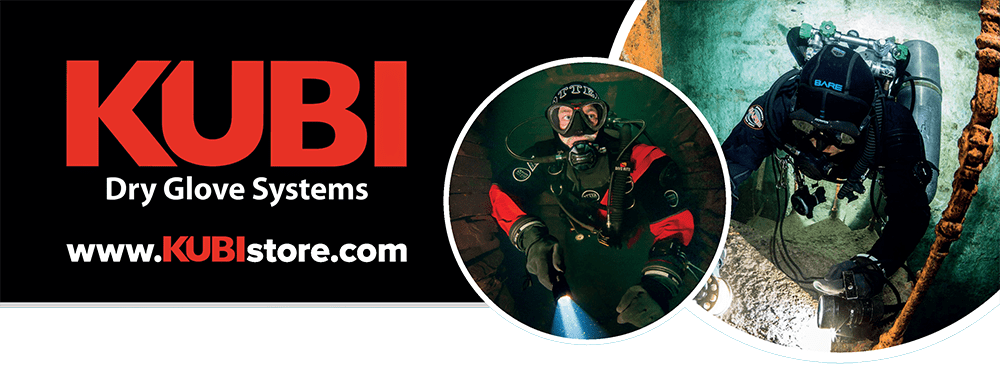
This article was originally published in Scuba Diver UK #74
Subscribe digitally and read more great stories like this from anywhere in the world in a mobile-friendly format. Link to the article.
